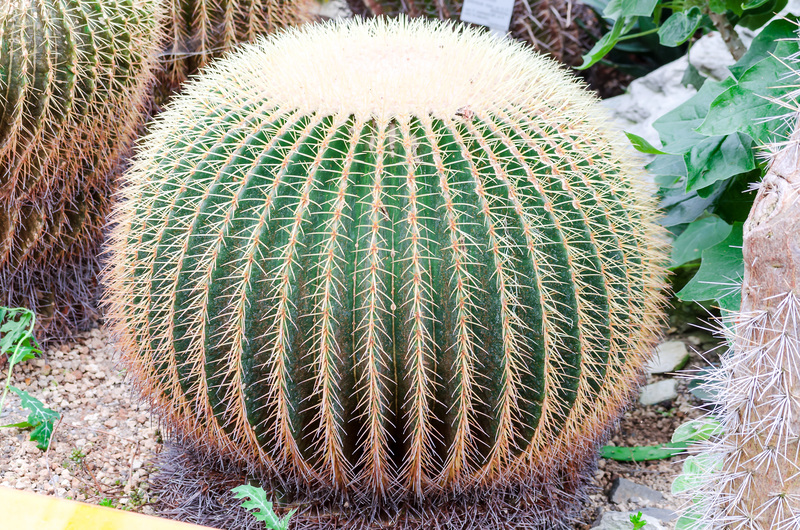Exploring the Benefits of Vertical Gardening
Posted on 05/06/2025
Exploring the Benefits of Vertical Gardening
In today's urbanized world, maximizing space has become not just a desire, but a necessity--especially for garden enthusiasts. Vertical gardening, a modern gardening technique, offers an innovative solution to limited ground space by utilizing vertical surfaces for growing plants. This approach is rapidly gaining popularity among homeowners, apartment dwellers, and businesses alike. In this comprehensive guide, we'll delve into the benefits of vertical gardening, discover creative ideas, and offer practical tips to make the most of your green spaces.

What is Vertical Gardening?
Vertical gardening refers to growing plants on vertically suspended panels using integrated structures or supports. This gardening style can be as simple as a wall-mounted planter or as complex as a free-standing living green wall. It leverages fences, trellises, or structures specifically designed for vertical planting.
Evolution of Vertical Gardens
While the concept of growing upwards has ancient roots, modern vertical gardens, or living walls, have surged in popularity over the past decade. Technologies have evolved to support intricate indoor and outdoor living murals, from self-irrigating systems to modular panels.
Key Benefits of Vertical Gardening
Adopting a vertical garden goes beyond aesthetics. There are numerous compelling reasons to embrace this innovative gardening method. Let's explore the wide-ranging advantages of vertical gardening:
- Maximizing Small Spaces: Living in an apartment or urban area often means limited gardening space. Vertical gardening allows you to grow upwards, efficiently using small balconies, patios, and even indoor walls.
- Improved Air Quality: Plants naturally filter toxins and produce oxygen. As you increase plant density via vertical gardens, the air purification effect is amplified indoors or in tightly packed outdoor areas.
- Enhanced Aesthetics and Privacy: Vertical gardens can transform blank walls and fences into lush, vibrant displays. They act as stunning visual features and can serve as natural privacy screens.
- Better Plant Health: Elevating plants can reduce exposure to soil-borne diseases and pests, leading to healthier, more productive gardens.
- Reduced Urban Heat: Green walls counteract the urban heat island effect, cooling the local environment and reducing energy costs for nearby buildings.
- Simplified Harvesting: For edible gardens, growing food vertically means you won't have to bend or crouch, making harvesting more ergonomic and accessible.
- Efficient Water Usage: Many vertical systems recycle water, minimizing waste and promoting conservation.
- Support for Biodiversity: These gardens can become mini-ecosystems, attracting bees, butterflies, and birds and supporting urban biodiversity.
Maximizing Small Spaces With Vertical Gardening
Urban environments often lack ground space for traditional gardening, making vertical gardens a perfect solution for city dwellers. By growing upwards, you transform underutilized walls, balconies, and columns into flourishing mini-oases.
- Balcony Gardening: Railing planters and hanging pockets give apartment balconies the ability to host colorful flowers, leafy greens, and aromatic herbs.
- Indoor Green Walls: Interior vertical gardens serve dual purposes as stunning decor and natural air filters in homes and offices.
- Fence and Wall Planting: Outdoor fences or garage walls can become abundant food and flower gardens, maximizing every inch of your property.
Top Tips for Small Space Vertical Gardening
- Choose lightweight, compact planters to avoid straining supports.
- Opt for plants with similar lighting and moisture needs.
- Install drip irrigation or self-watering systems to simplify care.
- Use mirrors behind plant panels for a larger, lighter feel indoors.
How Vertical Gardens Enhance Aesthetics and Privacy
Vertical gardens create mesmerizing displays of green, transforming bland surfaces into lush works of living art. These gardens can be tailored to fit any style--from minimalist patterns to wild, cascading walls.
- Aesthetic Appeal: Add color, texture, and vibrancy to patios, rooftops, and office interiors, boosting the ambiance and curb appeal.
- Natural Privacy Screens: Dense vertical plantings can shield balconies and yards from nosy neighbors, creating beautiful, functional privacy barriers.
Did you know? Chic restaurants and hotels now incorporate vertical gardens as eye-catching backdrops, elevating both experience and property value.
Improving Air Quality With Vertical Gardening
The purifying power of plants is undisputed--and going vertical means you can include far more foliage in a smaller footprint. According to studies, a living green wall can significantly lower levels of indoor air pollutants, benefiting those with allergies or respiratory issues.
- Removes Toxins: Plants like spider plants, pothos, and peace lilies are proven to remove volatile organic compounds (VOCs) and carbon dioxide from the air.
- Increases Oxygen: More plants mean increased oxygen production, contributing to a healthier home or office environment.
- Reduces Indoor Dust: Vertical gardens trap dust and airborne particles, keeping living areas cleaner.
Tip: For the greatest air quality benefits, include a diverse mix of broad-leafed species in your vertical setup.
Boosting Mental Well-Being and Productivity
Surrounding yourself with lush greenery elevates mood, reduces stress, and boosts productivity. Studies have shown that employees working near green walls or vertical gardens experience lower anxiety and greater job satisfaction.
- Connection to Nature: Vertical planting brings a sense of tranquility and balance, especially in urban and indoor settings.
- Sensory Enjoyment: The sight, scent, and feel of living plants add rich sensory stimulation to daily life.
- Creative Expression: Selecting, arranging, and caring for a vertical garden unleashes artistic creativity.
Investing in a vertical garden can do wonders for your personal and mental well-being, making it an ideal project for homes, schools, and workplaces.
Environmental Benefits of Vertical Gardening
The environmental impact of vertical gardening is profound, especially in cities challenged by pollution and the urban heat island effect.
- Energy Efficiency: Exterior green walls insulate buildings, reducing energy consumption for heating and cooling.
- Rainwater Management: Vertical planting systems can absorb rainwater, reducing runoff and decreasing pressure on urban drainage.
- Urban Biodiversity: Living walls provide habitats for pollinators, birds, and beneficial insects otherwise starved for green space.
- Urban Heat Moderation: Green surfaces absorb sunlight and release moisture, cooling hot cityscapes and making outdoor spaces more comfortable.
Better Plant Health and Easier Maintenance
One often overlooked benefit of vertical gardening is improved plant health. By keeping plants off the ground, you reduce the risk of soil-borne diseases and minimize pest problems common in conventional gardens.
- Improved Air Circulation: Plants grown vertically have superior airflow, reducing mold and mildew.
- Healthy Root Development: Specialized vertical gardening containers and hydroponic systems provide optimal drainage and aeration.
- Reduced Pest Exposure: Elevated plants are less accessible to snails, slugs, and some insects.
Plus, vertical gardens keep plants at eye level, making them easier to monitor and maintain, which is especially beneficial for those with mobility challenges.
Harvesting Fresh Food With Vertical Gardens
One of the most significant vertical gardening benefits is the ability to grow edibles in environments where traditional gardening seems impossible.
- Fresh Herbs and Greens: Enjoy easy-to-reach supplies of basil, cilantro, parsley, lettuce, and spinach just outside your kitchen door.
- Small Fruits and Berries: Strawberries, cherry tomatoes, and even dwarf beans perform well in vertical setups.
- Ornamental Edibles: Nasturtiums, violas, and other edible flowers make attractive vertical displays with culinary uses.
Pro Tip: Install vertical gardens close to kitchens or patios for quick access and the freshest flavors.
Harvesting from vertical gardens is also less strenuous, since plants are more visible and accessible, reducing the need to bend and reach.
Water and Resource Efficiency in Vertical Gardening
Many modern vertical gardening systems feature integrated watering systems that recycle water, making them highly efficient. Here's how vertical gardens help conserve resources:
- Water Conservation: Drip irrigation and hydroponics deliver precise amounts of moisture, reducing waste.
- Minimal Runoff: Planters with reservoirs capture and reuse excess water.
- Fertilizer Efficiency: Controlled environments allow nutrients to be targeted and absorbed with minimal leaching.
- Sustainable Materials: Many vertical planters and supports are made from recycled products, boosting eco-friendliness.
Supporting Local Biodiversity and Wildlife
An underrated advantage of vertical planting is fostering local wildlife and pollinators in areas starved of nature.
- Pollinator Support: Flowering vertical gardens attract bees, butterflies, and hummingbirds, essential for healthy ecosystems.
- Urban Wildlife Habitat: Living walls provide critical shelter for birds, beneficial insects, and small fauna.
Incorporating a mix of native flowering plants in your vertical garden increases its positive impact on urban biodiversity.
Creative Vertical Gardening Ideas
Vertical gardening is endlessly adaptable and can suit every space and style. Here are some inspiring ideas for your next project:
- DIY Pallet Planters: Repurpose old pallets into rustic, affordable vertical planters for herbs and flowers.
- Pocket Gardens: Hanging fabric pockets are perfect for growing greens and herbs on fences or walls.
- Shoe Organizer Gardens: Hang an unused shoe organizer and fill with soil and seedlings for a quirky, functional green wall.
- Modular Green Walls: Pre-made interlocking panels make it easy to create dramatic, professional-quality living murals indoors or out.
- Bottle Planter Walls: Upcycle plastic bottles into wall-mounted planters for succulents or small veggies.

Getting Started With Vertical Gardening
Interested in starting your own vertical garden? Follow these steps for a thriving, low-maintenance green wall experience:
- Choose the Best Location: Assess available sun, wind, and space--your garden's site will determine plant selection and support structure.
- Select the Right System: Decide between wall pockets, modular systems, trellises, or hydroponic setups based on your budget and goals.
- Pick Suitable Plants: Leafy greens, herbs, trailing flowers, and some vegetables excel in vertical environments.
- Add Automated Watering (If Needed): Drip irrigation or self-watering planters greatly simplify maintenance.
- Plan for Growth: Arrange taller or trailing plants at the top, and shade-tolerant species toward the base.
Pro Tips for Vertical Garden Success
- Monitor for consistent moisture, as vertical planters may dry out faster than ground beds.
- Feed regularly--nutrients are depleted faster in confined soil volumes.
- Regularly prune and deadhead for neatness and plant vigor.
Conclusion: The Transformative Power of Vertical Gardening
The many benefits of vertical gardening make it a smart, eco-conscious choice for people in cities and suburbs alike. Not only does it maximize limited space and beautify your surroundings, but it improves air quality, supports mental health, and encourages biodiversity.
Whether you're a seasoned gardener or just starting out, vertical gardening is accessible, rewarding, and brimming with creative possibilities. By exploring different vertical gardening methods, you'll enjoy greener spaces, fresher air, and a deeper connection to nature--no matter where you live.
Start your own vertical garden today and experience these remarkable benefits firsthand!



